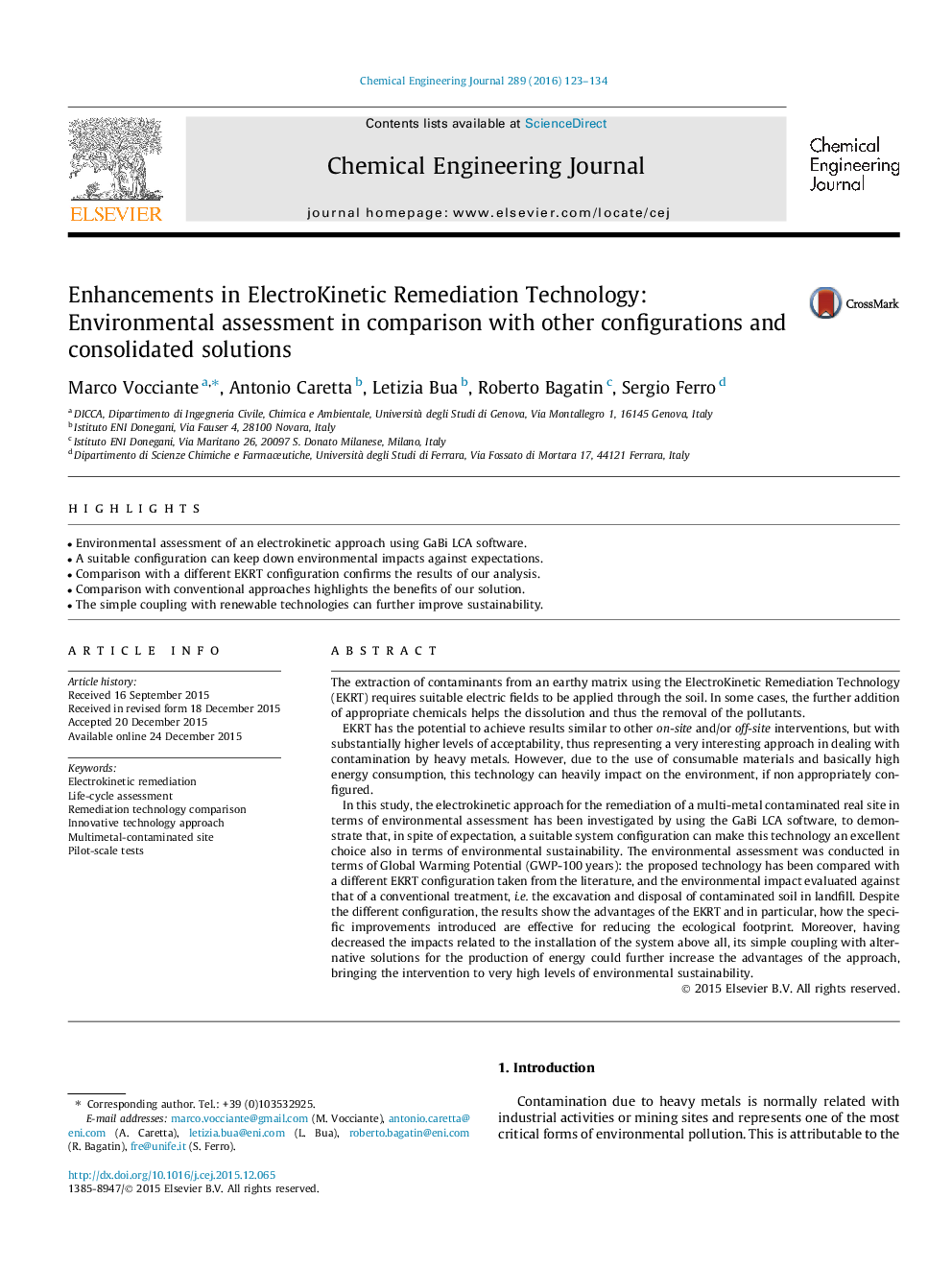| Article ID | Journal | Published Year | Pages | File Type |
|---|---|---|---|---|
| 145811 | Chemical Engineering Journal | 2016 | 12 Pages |
•Environmental assessment of an electrokinetic approach using GaBi LCA software.•A suitable configuration can keep down environmental impacts against expectations.•Comparison with a different EKRT configuration confirms the results of our analysis.•Comparison with conventional approaches highlights the benefits of our solution.•The simple coupling with renewable technologies can further improve sustainability.
The extraction of contaminants from an earthy matrix using the ElectroKinetic Remediation Technology (EKRT) requires suitable electric fields to be applied through the soil. In some cases, the further addition of appropriate chemicals helps the dissolution and thus the removal of the pollutants.EKRT has the potential to achieve results similar to other on-site and/or off-site interventions, but with substantially higher levels of acceptability, thus representing a very interesting approach in dealing with contamination by heavy metals. However, due to the use of consumable materials and basically high energy consumption, this technology can heavily impact on the environment, if non appropriately configured.In this study, the electrokinetic approach for the remediation of a multi-metal contaminated real site in terms of environmental assessment has been investigated by using the GaBi LCA software, to demonstrate that, in spite of expectation, a suitable system configuration can make this technology an excellent choice also in terms of environmental sustainability. The environmental assessment was conducted in terms of Global Warming Potential (GWP-100 years): the proposed technology has been compared with a different EKRT configuration taken from the literature, and the environmental impact evaluated against that of a conventional treatment, i.e. the excavation and disposal of contaminated soil in landfill. Despite the different configuration, the results show the advantages of the EKRT and in particular, how the specific improvements introduced are effective for reducing the ecological footprint. Moreover, having decreased the impacts related to the installation of the system above all, its simple coupling with alternative solutions for the production of energy could further increase the advantages of the approach, bringing the intervention to very high levels of environmental sustainability.
